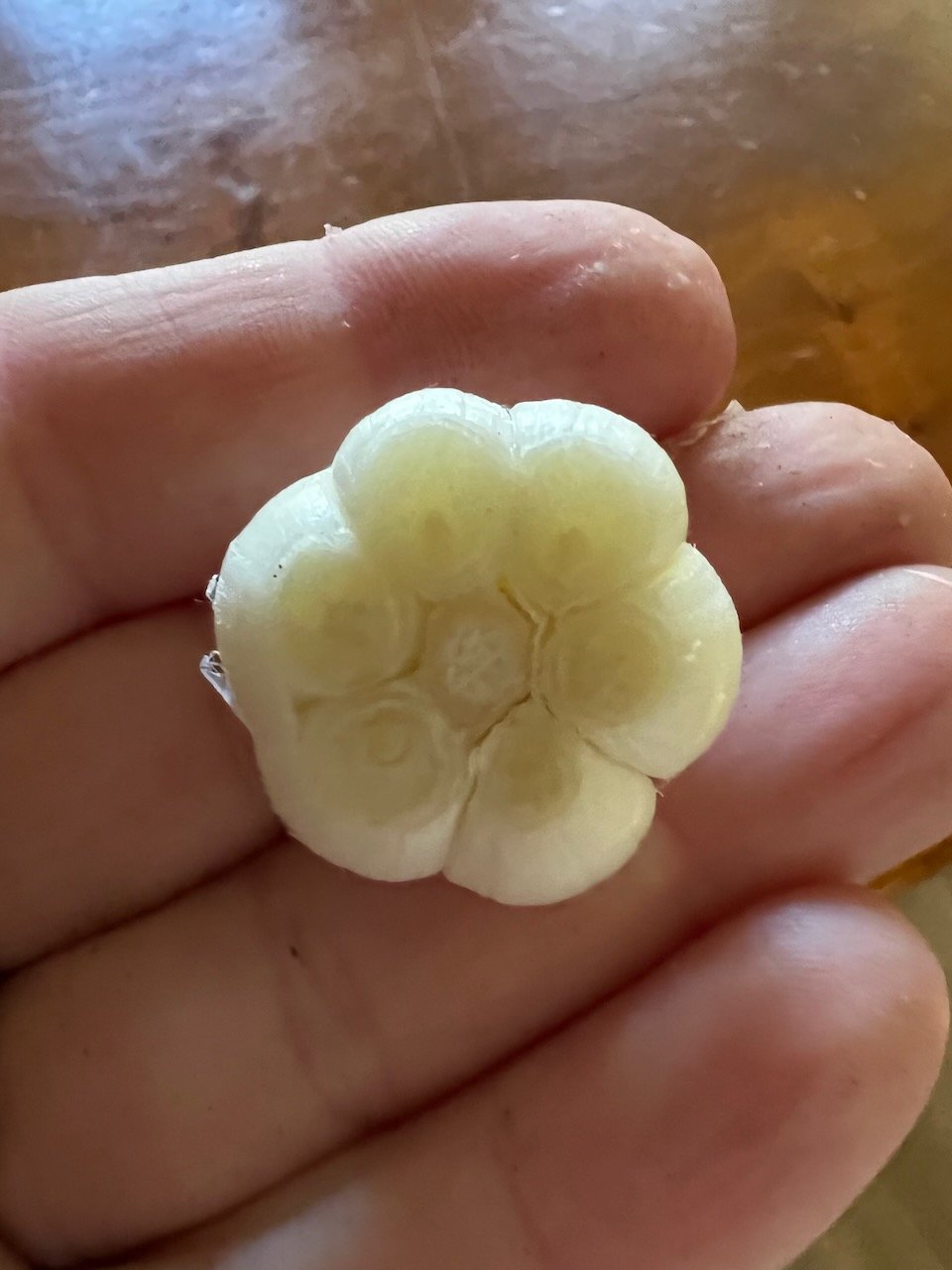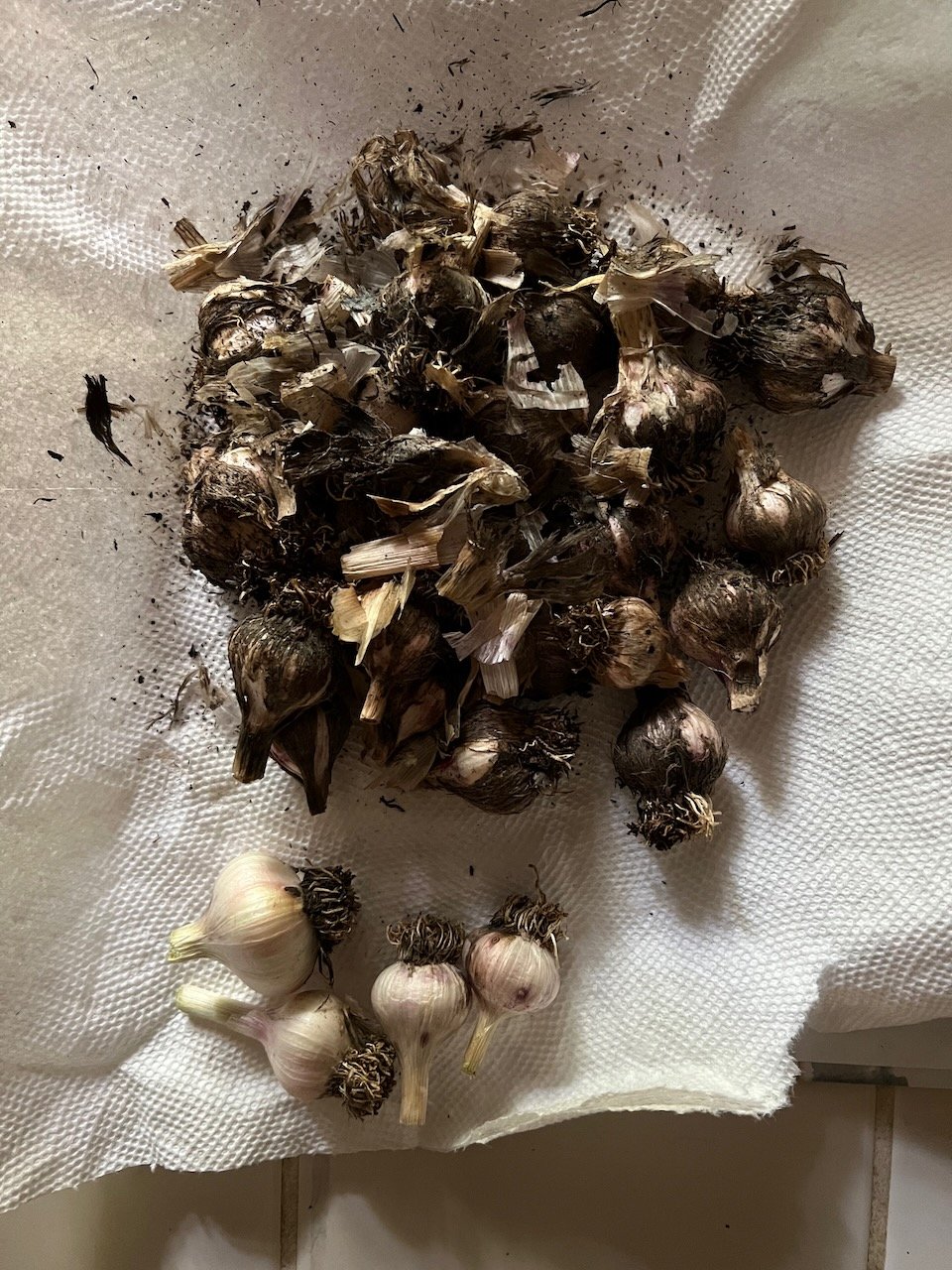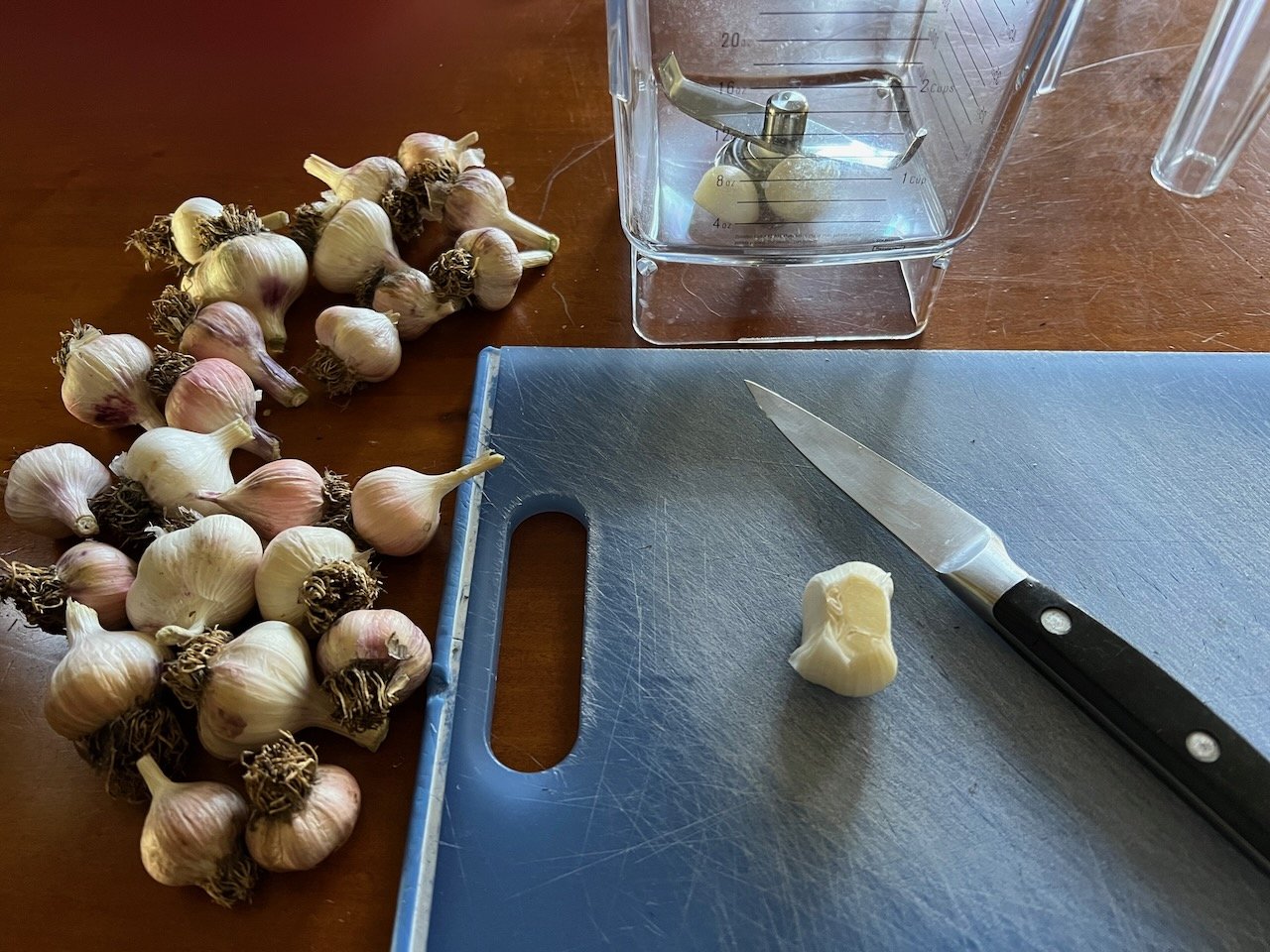In my school garden, we have an extremely vigorous grape vine. It is practically covering the fence from one side of the property to the other; it’s beautiful in three seasons, producing nice flowers in spring, prolific fruit and green leaves in summer, and flaming red leaves in fall. My guess is that this variety is ‘Roger’s Red,’ which is a hybrid of our native California grape. The fruit is tasty, although quite seedy.
This year, the grape grew to gigantic proportions, produced an incredible amount of fruit, and has made the wildlife around the Environmental Center very happy (we have a turkey family nibbling the fruit each day, and the human wildlife is also happy taking home bunches of fruit after class). My co-worker decided that we needed to harvest as much fruit as possible and give the vine a good pruning, which it likely hasn’t had in 30 years. So, our student gardener has taken on that project, and the other day harvested two enormous buckets of grapes.
I decided to bring the grapes home and see if I could make some decent juice from them. I didn’t have high hopes for this project because the grapes are really small, the size of blueberries (small ones, not those giant inflated ones you find in big supermarkets), and they are nearly all seed. I was sure they wouldn’t yield much juice.
I looked up how to make grape juice in my trusty Ball Blue Book, and that advised washing the grapes, then crushing them, then heating the juice on the stove. This seemed backward to me. (Not the washing part; of course that should come first.) I thought about how to crush them; I had no interest in stomping them with my feet. I decided I would take the grapes off the stems, then heat them gently in my big Dutch oven on the stovetop, adding a little bit of sugar (no need to measure because I’m not water-bath or pressure canning this juice) and waiting until it dissolved and the grapes were nice and warm. Then I would put them through my food mill to remove the skins and seeds.
Well, taking the grapes off the stems took an hour in itself, and I only did a about a quarter of the grapes in the buckets before I decided I’d had enough of that. Heating them was interesting because they immediately started to release juice. Putting them through the mill was straightforward, though it took a bit of muscle because of those large seeds. The primary problem was the MESS. Purple juice everywhere! (I was glad I thought ahead and put on some old clothes.) Purple pulp everywhere!
But the smell, oh my heavens, the smell. I haven’t had grape juice since I was a child, and I found myself wondering why. Probably because the stuff in the store is too sweet and barely juice at all. But this! This smelled like the best fruit orchard in the world, rich and deep and sweet, and the color of the juice! It’s the most gorgeous deep dark red, like a jewel.
Tom and I had a little at dinnertime, and whoa - it is really amazing. Intense, aromatic, delicious, pungent, sweet - you can taste the antioxidants and vitamins! You don’t need more than a a quarter cup - it’s super concentrated!
This quart of juice came from probably only 1-2 pounds of grapes, yielding far more juice than I expected from these small fruits. I have a lot left to process, and am trying to convince myself to make jelly. When’s the last time you had grape jelly? When’s the last time you had HOMEMADE grape jelly??? (I don’t think I ever have.) I mean, it’s got to be delicious, right?
But the clean up…. I’m not sure I can bring myself to go through this process again. The pulp and seeds were easily disposed of (I took it to the chickens, who were very interested), but I had to be very careful not to accidentally put any of those seeds down the garbage disposal (they are the size of popcorn kernels!). I ended up rinsing all my equipment outside with the garden hose before bringing it back inside to wash properly. My counters were a mess, my sink looked like something had died, and my hands were completely stained.
But this stuff is so darn tasty, I might have to just go for it. The time, effort, and mess are the trade-off for an unexpected homemade treat from a successful garden crop.


























